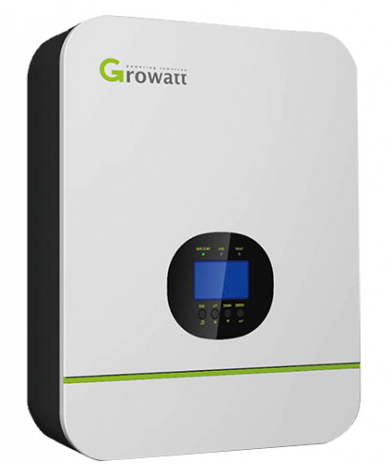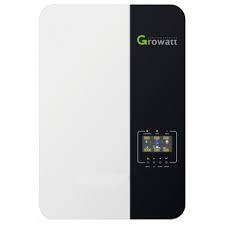My vote is also for sunsync… Your panels need to be high voltage strings of at least 4… ideal would be a string of 8.
If your roof has akward angles and shapes you might be better off with 2x5KW, which will give you 4MPPTs where you need to string together at least 4 panels for the mmpt to start up (if you have shading then you might need more than 4 panels).
If you have a nice east/west roof or a north roof then the 8KW might be ideal
That is indeed a good question. If you want the best bang for buck (and you can re-use all this stuff later when you buy your Victron inverter… ![]() ), get a PV-inverter, and move your loads to daytime as much as possible.
), get a PV-inverter, and move your loads to daytime as much as possible.
Unfortunately ABB’s NRS097 status is lagging behind, otherwise I would absolutely recommend one of those. They are around 30% cheaper than the Fronius, and compared to a Solis they are significantly more upmarket.
But with that said, I hear good things of the Solis, and they are cheap. The big boy (4.6kW) is like 8k-9k.
Edited to fix Fronius vs ABB pricing.
I have a little 1.5kVA Solis downstream of a 5kVA Victron Phoenix. It has been problem-free for 2 years.
I haven’t used the CT that limits the export, but I can’t complain about the Solis, It’s been rock-solid.
Mind you all the PV Inverters I have, have been good.
Touch wood.
PV inverters are so easy to install.
I considered both Solis and Hoymiles grid-tie options and decided to rather go the hybrid route to allow for time-shifting as I was able to get some Pylons for a very good price. Grid-tie is great, but is harder to optimise as you lose what you don’t use. Being able to pop excess into a battery for later use is a big win for me
I have it downstream of a bi-directional charger/inverter. (Phoenix 5kVA).
It makes more the 5kVA AC power available for loads during the day, but if I don’t have the loads it charges the batteries through the bi-directional Phoenix.
No. It still has 2, just higher capacity so you can have 2 strings on each mppt for a total of 22A I think.
Help me quick, the part in bold?
Daytime:
Hybrid grid-tied inverters will power the house with solar power.
At night:
Batteries are used to further bring down Eskom costs.
The batteries are only recharged the next day using spare solar power.
So, if the batteries are full and there are no house loads, yes, you “lose” the “free power”, but is it a “loss”, or just good use of the system?
The trick here is to use as little of Eskom as you can, and that makes hybrid grid-tied systems so awesome, as that is what they do.
I could be wrong, but from what I could gather the hybrid grid-tied options are basically the Axpert / Growatt types and Sunsynk. The Solis guys can’t add batteries, and the ones that can are in the same price range as Sunsynk.
A PV inverter does not make AC from a battery, but the AC it does make can still charge a battery.
You can add a Solis (PV inverter) on the AC out of a Hybrid inverter (Victron at least anyway).
This means that it will still work during daytime load-shedding and still contribute to charging the battery of the hybrid inverter.
This effectively increases the daytime size of the hybrid inverter and adds more MPPTs for a fraction of the cost.
OK I have to protest. A little.
Hybrid is an English word that means it blends characteristics from two distinct entities (a bit of this, a bit of that). So if we’re going to use the term, we had beter be consistent about how we use the term. This is, by the way, my number one reason for being a little miffed with how the term was coopted by marketing people to sell inverters that aren’t hybrid.
But let’s live and let live and just list the definitions.
Definition A: A hybrid inverter mixes characteristics of a grid-tied inverter (or a PV-inverter) with a battery inverter.
Definition B: A hybrid inverter mixes characteristics of a battery inverter and a solar charger.
Whatever definition you pick (I insist that A is the correct one), you have to stick with it. Then you cannot put the Growatt (the one people normally talk about), the Axpert, and the Sunsynk in the same category, because they are very different in this regard. Sunsynk is a proper hybrid that AC-couples. The others are not.
I think you’re skipping a step. The original said “grid-tied is great, but…you lose what you don’t use”, which I interpret as without batteries. I’ll use my own scenario as example with a Fronius grid-tied inverter without any batteries:
The Fronius is 5kw with 7kwp panels, so it has a nice flat-topped curve during the day, but only while you’re using the power since I can’t feed in. So the loss here is anytime you’re not maxing out the 5kw.
With batteries added, any delta < 5kw will go there obviously for later use, and after the batteries are full, you again lose the rest.
But the “first loss” (without any batteries) is much greater than the “second loss” (with full batteries).
Obviously you want to shift as many loads to daytime as possible, keeping close to 5kw, so in my case it is a very careful balance of geysers, borehole, pool pump, pool heatpump and aircons. (Washing machine & dishwasher is currently on “not before 10:00 please”, but finer control is not solvable via technical means.) Running all those things together is an insane amount of power, but without them the base load is very low. It’s possible, but I would definitely put this in the “hard” pile requiring much more than a couple of timers.
So grid-tied is easy to install, easy to run, but hard to optimise in my opinion. The whole design is really geared towards feed-in as an ideal, or alternatively diverting into batteries a distant second.
What do you mean by “the Sunsynk is a proper hybrid that AC-couples. The others are not.” What is it that the growatt, as an example, can’t do? (which ironically is back to the point of the thread too)
In layman’s terms, the Sunsynk can “mix” grid, PV and battery. The Growatt cannot.
I’m talking about this Growatt, which is essentially a rebadged Voltronic.

Sometimes I catch myself trying to mico-manage the “losses”, forgetting to focus on the “wins”, read I did not use any Eskom most of the day, that is a win. So what I couldn’t use it all.
For it extends over 12 months. In summer we perceive that we have “losses”. In winter we “run short”. But over 12 months, what was the combined “win” over Eskom? THAT is the focus I try to keep in mind.
Think of @plonkster’s definition of proper hybrid as “has the ability to blend grid-power and solar and/or batteries”.
Many “hybrid” inverters are inverter + solar charger (def B), lacking the ability to synchronise to the grid and blend grid power in if you need more than the inverter is directly capable of. If you exceed the inverter rating it switches back to the grid entirely (or trips).
The alternative “hybrid” inverters are grid-tied solar inverter + battery (def A). They synchronise to the grid and can blend additional power from the grid, as well as feed back. They can also run off-grid (unsynchronised) when the grid is down. The implementation might differ (is it a grid-tied inverter with a battery or a inverter-charger that syncs?), but that doesn’t matter unless you’re comparing models head-to-head.
Someone else will need to say which models follow which definition.
Thats the trouble. Hybrid is now a meaningless term. I literally don’t know what it means anymore. So now we have to spell it out.
It reminds me somewhat of another political issue, re what “woman” means. It can be both a statement about genetic make-up, or a statement about state of mind. I don’t particularly care, just define your terms clearly and we’re good to go ![]()
My go-to for separating the grid-tied wheat from the chaff is the following:
Does it have a current-measuring meter or clamp which is supposed to go immediately after your main switch?
If it does / can have one, it is definitely grid-tied capable in one or more configurations. If it cannot have one, it is not grid-tied capable in any configuration (99.9% sure).
I’m sure this extends well to the “hybrid” definition too.
I thought grid-tied meant that the inverter needs an active grid connection to work. i.e. if load-shedding / power outage the inverter doesn’t do anything.
And those are practically the same settings you’ll find on every Voltronic clone.
It is hugely confusing, yes, and the marketers are not making it any better. But I think you get it now. The Growatt looks at the battery voltage/SOC/whatever and says: Aha! I can disconnect the grid. And then you run purely off-grid. And then at some point it might go: Oooh the load is a bit heavy, reconnect the grid. So you are always running 100% on grid, or 100% off-grid.
Something that haunts users of these Voltronics is when the load is higher than the inverter can carry (so it connects to the grid), but the battery is full (so the MPPTs do nothing).
But it makes them much cheaper…

